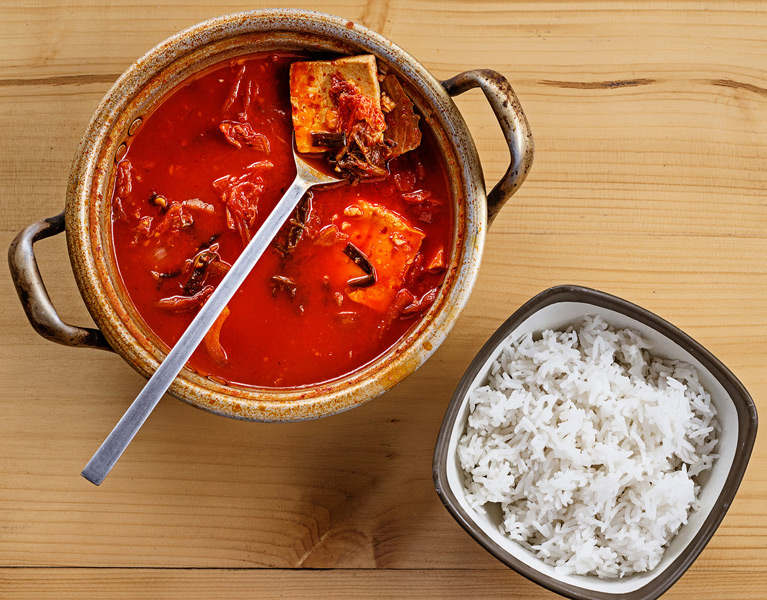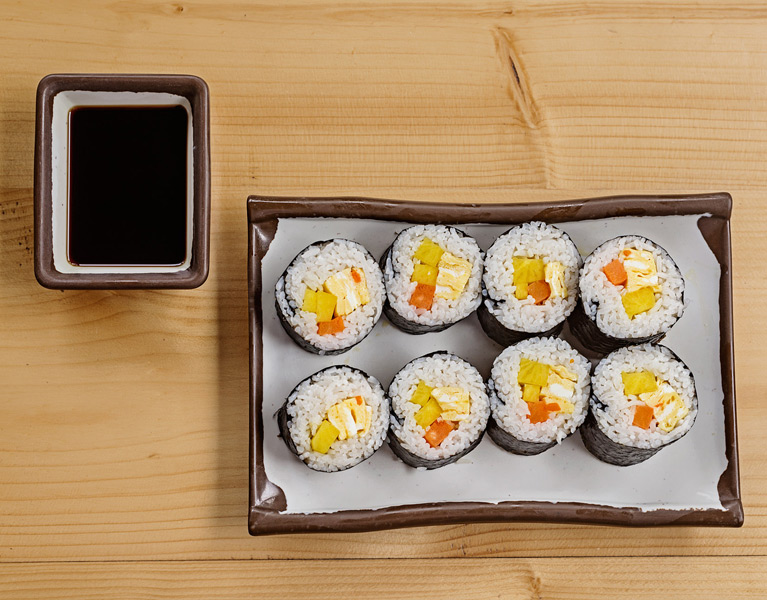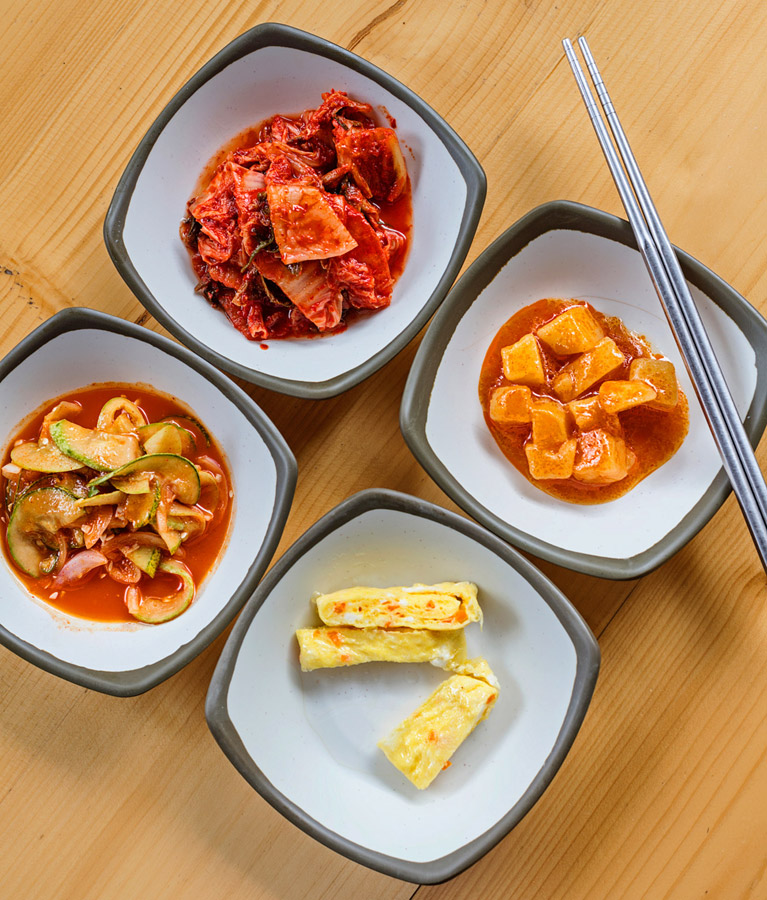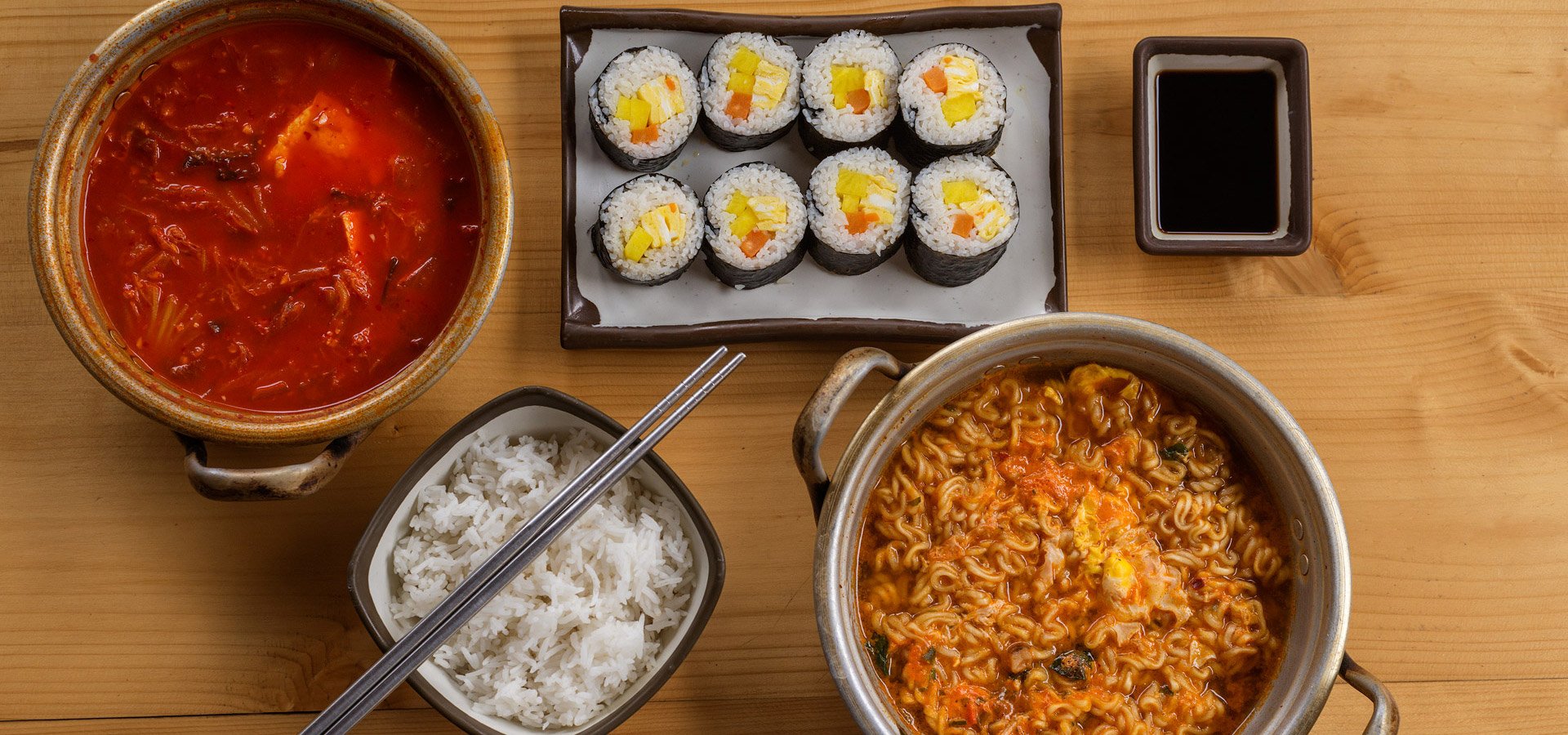Contrast and duality run through Korean food—be it steaming bowls of jigae (stew) versus mul-naengmeyon (cold noodle soup), or dub bop (rice with meat or vegetables) versus gimbap. Jigae and mul-naengmeyon may look similar on the surface, but are as different in spirit as the country is from its neighbours Japan and China.

"Only Koreans use metal chopsticks," says Jin Pum Kim, owner of Gung The Palace, one of Delhi's most successful Korean restaurants. "The Japanese and the Chinese use wooden ones."
The use of metal chopsticks can be traced back through history, when members of the royal family used silver chopsticks to eat. If the food was poisoned, the chopsticks changed colour as warning. Since not everyone could afford silver, people with lower incomes began to use steel and that slowly became the societal norm.

Gimbap is the Korean version of typical Japanese sushi. It was conceived during the time Korea had been occupied by Japanese forces (which was up until the end of the Second World War). Gimbap may be eaten both before mains or along with them—a versatile classic, quite like the little black dress of Korean fare. It makes an entrance each time it arrives at the table or when it's pulled out of a picnic basket.
With peripheral layers of seaweed and rice, and variations of fillings—vegetable, cucumber, fish, or picked egg—it adorns the windows of Asian restaurants and delis across the world. However, like all classics, it does have its poor knock-offs: squishy versions clad in depressing cling film, on supermarket shelves.
When rice was new to the country, it was used to pay taxes.
Today, rice forms the backbone of the cuisine, commonly eaten with roasted or barbecued meat, besides in gimbap and along with stews. It was given royal treatment back when it was first brought to the country because it was very expensive. The value of the grain was deemed so high that it was used to pay taxes. In meals, it was mixed with other grains like barley.
Times of antiquity also prized beef and pork. Although pork was sometimes given preference in those days because slaughtering cattle affected farming, modern-day Korea has inherited the love for both.
Vegetables are equally important, both because ancient Buddhism favoured them, and because most Korean side dishes are vegetarian, with the exception of gyeran mari (rolled omelette).

"Banchan (or side dishes) are indispensible," Kim continues. "It gives our meals harmony: for a typical dinner at home, there'd be two meat mains, and six types of sides, all of which are vegetarian."
Taking care to communicate that his intention is not to offend us, he adds with a hint of justifiable pride: "Indian food—even the vegetarian stuff—can be quite heavy. Korean food, on the other hand, is very healthy. We don't fry our vegetables. We only boil them, so the nutrients remain."
Harmony and thoughtful cooking is closely followed by drinking etiquette. Diners are expected to cover their mouths and drink alcohol facing away from the eldest male at the table. Although it sounds like the manner borders on patriarchal values, it's really meant to establish an equation of respect between parents and children, or teachers and students.
Brief rituals like these, and the introduction of foreign ingredients to local kitchens, have been gifted to Korea by dynasties that ruled the country in the past. Being aware of the rich history that has shaped the cuisine, whilst biting into some gimbap on a hot afternoon or sipping soju on balmy evening, might just make the culture seem more approachable to non-Koreans.




